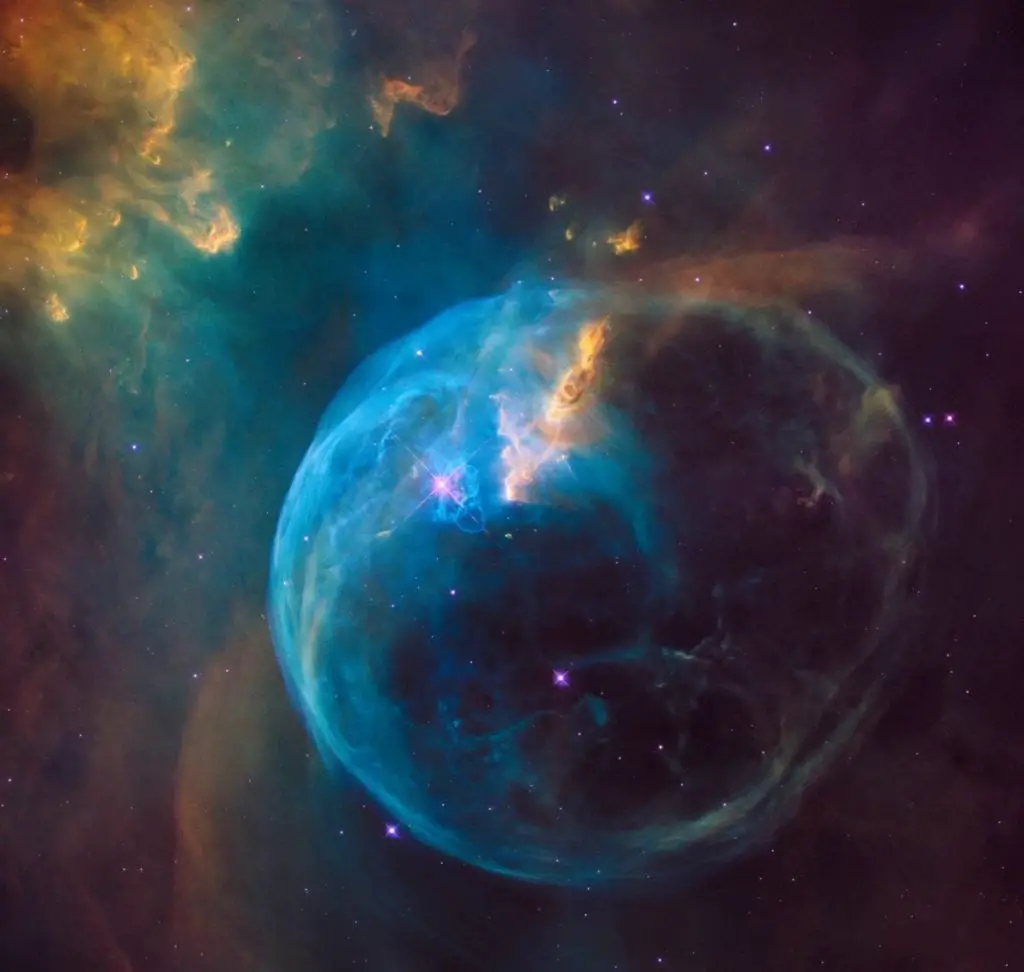
If you were to wake up one night in the middle of space, what would you imagine to see? Billions of stars shining before you? A sea of black? Well, Let’s find out.
It is important to understand that light travels in a straight line unless it is reflected or refracted. Although there are trillions of stars in the Universe, the distance between each is vast and void of molecules. With nothing but gases in between these masses of energy, no visible light could enter our eyes except those that are emitted from the star itself.
Despite the answer being relatively easy to grasp, it still doesn’t show the whole picture. Let me show you why.
Olbers’ Paradox and the Night Sky
Named after the German astronomer Heinrich Wilhelm Olbers, the Olbers’ Paradox asks a very simple but interesting question. Why is the sky dark at night?
If the universe was infinite, static, and timeless, there should be a star situated uniformly in every direction, and the night sky would appear to glow. But our experience tells us that is not the case. Thus, the Olbers’ Paradox was born.
Fundamentally, this paradox operates under the assumption that the universe is infinite, static, and timeless, but we now know this is not the case. The universe has been expanding ever since the beginning of the Big Bang, and the objects within it are getting farther away from each other as time passes. And of course, this includes our precious sun as well. As these light sources are moving farther away from each other, the black space in between these stars become more prominent, and the universe becomes seemingly darker as a result.
Still, it’s not like there are only hundreds of stars in the universe, there are trillions!

But even so, there are just simply not enough stars to illuminate the sky at night. And stars don’t just magically appear. It takes a star millions of years to form from the collapse of gas clouds.
Most astronomers can agree that the universe is 10-15 billion years old, so the maximum distance we can receive light from is set. At light speed, it will still take billions of years for light from the farthest stars to reach Earth, and the universe is constantly expanding.
Why is there light on Earth?
This might seem like a straightforward question, but it is a crucial one to the understanding of the darkness in space.
As most of us know, the day and night on Earth are illuminated by the sun and moon as the Earth rotates on its axis. But if we were to look up at the sky from the moon as the sun shines down on it, we would still only see darkness. Why is that?
Well, the Earth has an atmosphere! When the light from the sun reaches our atmosphere, it gets reflected and diffused by large particles such as dust and water particles. This effect helps by scattering or letting in different wavelengths of light on the visible light spectrum, which lets us see the different colors of the sky and the breathtaking sunrises and sunsets on the horizon. Without an atmosphere on the moon, only darkness awaits.
Which, moves us to the next question.
Is it pitch black in space?
From a visible light standpoint, it really might seem the universe is completely dark, but that is just not the case. There are several factors that may play in this appearance.
Laser Pointer
It wouldn’t be inaccurate to say that Space is filled with light, but to reiterate, light always moves in a straight line unless it is reflected or refracts. Since there is nothing to reflect the light between the stars, it would appear pitch black in our eyes.
If that was a little difficult to grasp, let’s replace the light source with a laser pointer.

When the laser pointer is powered on in a well-lit room, we generally see the resulting red dot at its destination, but not the beam itself. Like all others, the light beam from the pointer only travels in one direction, and there is nothing in between to change its direction, so the beam will not become visible to us. But what happens when the room becomes completely dark? Well, as our eyes adjust, we begin to see the dust particles that scatter the light from the laser pointer, which then make the beam visible to our naked eye. If there were any dust or any form of molecules in the space between two stars, then just like the beam of a laser in a dark room, we would be able to see it too.
Redshift
Another huge factor that plays in the darkness of space is the distance at which the light has to travel before it reaches our eyes.
As the universe expands, the light source or star is constantly moving further away from the light it has emitted. This in turn increases the wavelength of the electromagnetic radiation in a phenomenon known as Redshift, which may ultimately increase the wavelength so far from visible light to infrared, so that it is no longer visible to the human eye.
Aside from the Redshift effect, the light intensity also decreases with increased distance as the photons of light spreads over a larger area. So, we may not even realize that the light from a star that is billions of light years away has reached us as its intensity has been dimmed to unnoticeable levels.
And despite there being no dust or collections of molecules that matter in the empty voids of space, there exist large clouds of gases that move around and serve as a veil to hide the light from the stars. The further away a light source is from us, the more “veils” it has to pass through before it can reach our eyes.
Looking through a Telescope
Visible light is only a small part of the wavelength on the electromagnetic spectrum, but they are the only form of EMR visible to the human eye. So, although the empty space between stars and galaxies may seem like complete darkness to our naked eye, they are actually lit up in rainbows of colors.
Understandably, what we can’t see doesn’t mean it doesn’t exist. Telescopes can help us see the wavelength and frequencies that are invisible to the human eye like Radio, Gamma, Microwave, Infrared, UV, and X-ray. Through a telescope, depending on the types of gases, the seemingly invisible and dark nebulae come alive in all colors and shapes imaginable!

